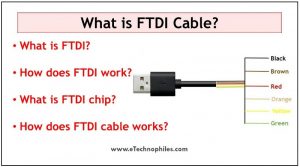Last updated on March 22nd, 2024 at 12:37 pm
FTDI chip is one of the most popular USB to TTL converter ICs. They are used to interface devices like Arduino with the laptop through a USB cable. In simple words, an FTDI chip makes it super easy to convert a USB signal to the UART signal understood by the microcontrollers.
But how does the FTDI chip work? How a signal is converted from USB to UART? Read below to find the answers.
Table of Contents
Let’s start our discussion on FTDI starting with its full form.
What is FTDI?
FTDI stands for Future Technology Devices International which is a semiconductor device company founded on 13 March 1992. The Scottish-based company specializes in Universal Serial Bus (USB) technology. Apart from USB technology, the design of Application-Specific Integrated Circuits (AISC) is also involved in FTDI. FTDI is also considered to have emerged from Computer Design Concepts Ltd.
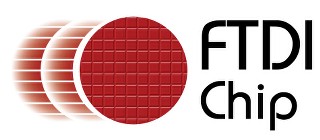
FTDI majorly focuses on USB technology, and the USB to TTL interface is their most popular product. These are available as cable as well as a module (like a chip). These products are widely used as an interface in microcontroller development boards like Arduino, ESP-01s, etc. because they require a USB interface.
The FTDI interface is the easiest solution to connect the devices with the TTL level interface to USB since it does not require any additional software installation in advance. Thus they act as simple plug-and-play devices and are very handy. The major application of the FTDI interface is in general TTL serial communication.
What is FTDI chip?
We can define the FTDI chip or ICs as the brain of the FTDI modules and cables. Once the input signal is received and converted to proper channels, the FTDI chip operates the interfacing procedure in the module.
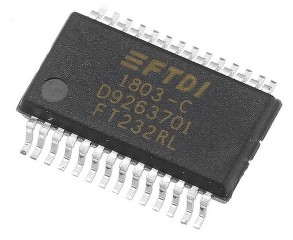
The FTDI chip is mostly found in USB adapters in the connection of RS232 and parallel First-In-First-Out (FIFO) hardware interfaces. USB-2-COM is another important user of the FTDI chip. These chips are available in various configurations corresponding to their applications. Some other popular applications of FTDI chips are:
- Mobile phone cables: to convert RS232 signals to support USB.
- Service boxes: It’s a service tool used by phone and car repair centers that require connection to PC through USB.
- Any device that needs to connect to USB through a PC.
There are two simple devices that convert USB signals to Serial signals (for microcontrollers like Atmega328P): FTDI Cable and FTDI converter module. Both of them have an onboard FTDI chip.
What is FTDI cable?
The figure below shows the FTDI cable that supports 3.3V logic.
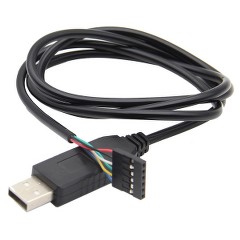
FTDI cable is a popular interface used to connect Universal Asynchronous Receiver-Transmitter (UART) devices to PC. These cables fall under the category of USB to TTL serial UART converter cables which are usually available with FT232R IC.
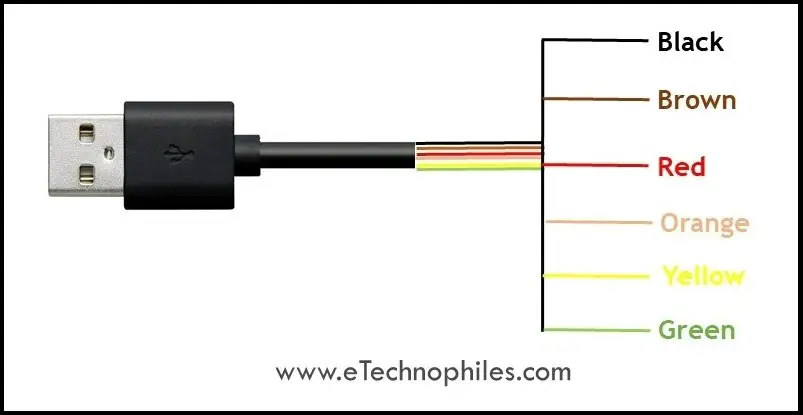
*For FTDI cable pinout explanation, click here.
What is the advantage of using an FTDI cable?
An FTDI cable is preferred over other converters due to the following reasons:
- No additional installation processes are required to use FTDI cables.
- They are easy to handle and establish fast connections with TTL and USB.
- They are easily available in the market at a cheaper rate.
- The cable is hard so it is also possible to use on hard platforms.
- It enables high-speed data transfer since it works for high baud rates
- The interfacing with FTDI cables can be performed at any place irrespective of time.
Limitations of a FTDI cable
- It is a comparatively large
- It is difficult to connect to a project.
- In some cases, device drivers have to be installed before using the cable. These drivers are freely available on the FTDI website.
Where are FTDI cables used?
The most important usage of FDTI cables is to enable a USB interface for Arduino boards. The Arduino Pro Mini and Lilypad boards are prominent among them. These boards do not have an in-built USB port and the FDTI cables enable them to utilize the USB facility directly. The FTDI cables are thus used in several USB-related applications due to their easy adaptability.
The USB interfacing with FTDI cables is used for:
- Transfer of low bandwidth USB data through computer and external devices.
- Transfers and communication within PC and USB.
- Interface devices to the USB port of a computer.
- Data transfer between PDA and USB.
These features of FTDI are utilized in the devices listed below to increase their functionality:
- USB serial RS232 converter
- Wireless modems
- Bar code readers
- Smart card reader
- Software and hardware encryption dongles
- Flashcard reader and writer
- RS232/RS422/RS485 converters
What is FTDI adapter module?
In simple words, the FTDI adapter module is a complete package in which the FTDI chip is integrated with connectors, voltage regulators, Tx/Rx, and other breakout points. The module thus falls under the category of UART board and is mostly used for TTL serial communication.
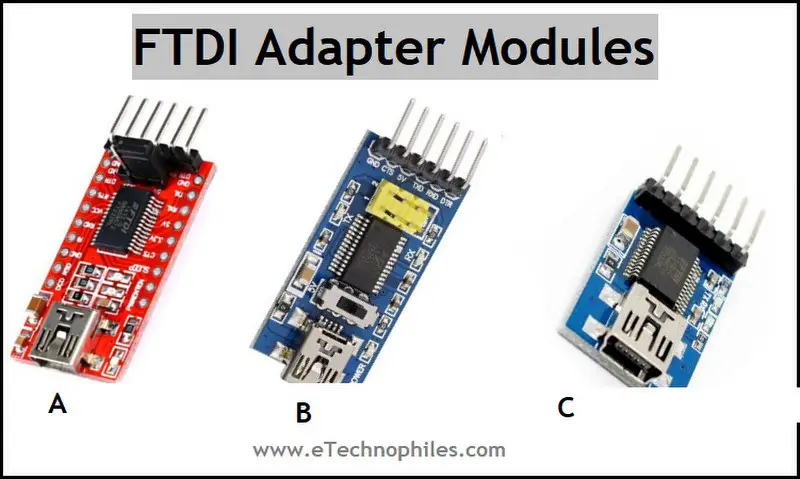
This is available as an all-in-one package that performs the signal conversion before feeding to the FTDI chip as visible in the figure below. The signal received from the USB is thus converted and fed to the FTDI chip which enables an efficient TTL and USB interface.
*For FTDI Module pinout explanation, click here.
Where are FTDI converter modules used?
The major application of the FTDI module is interfacing in serial communications, mostly as USB and serial TTL interfacing. Communication through microcontroller development boards such as ESP-01s and Arduino is the most popular application of the FTDI module because they do not have an in-built USB interface.
Different formats of FTDI modules are available in the market to support a wide range of applications. Let’s see some variants of FTDI modules and their applications.
- CleO Modules: Used to develop easier human-machine interfaces.
- NerO Module: More compatible with Arduino UNO.
- FT51A Module: Compatible with 8051 microcontroller.
- SuperSpeed Modules: Used in the development of FT600, FT601, and FT602 series of USB 3.0 ICs.
- Development Modules: Supports the prototyping and development of FTDI USB devices to ensure USB connectivity to new product designs.
- Application Modules: Can be easily integrated into customer requirements.
What is FTDI driver?
As we mentioned before, one of the biggest advantages of FTDI converters is that they do not require any interfacing process. However, very few devices need to register the FTDI USB to TTL serial converter module to their system. This registration is performed using FTDI Drivers. This registration enables the system to visualize these converters as COM ports. It means the application software in that system can access the FTDI converter module similarly as it accesses a COM port.
The FTDI driver can be downloaded in three ways:
- It can be downloaded manually
- If it exists, just update the FTDI driver manually
- Update the driver in the Device Manager
Once the FTDI is downloaded, install it into the system and you can easily access the FTDI USB to TTL serial converter.
